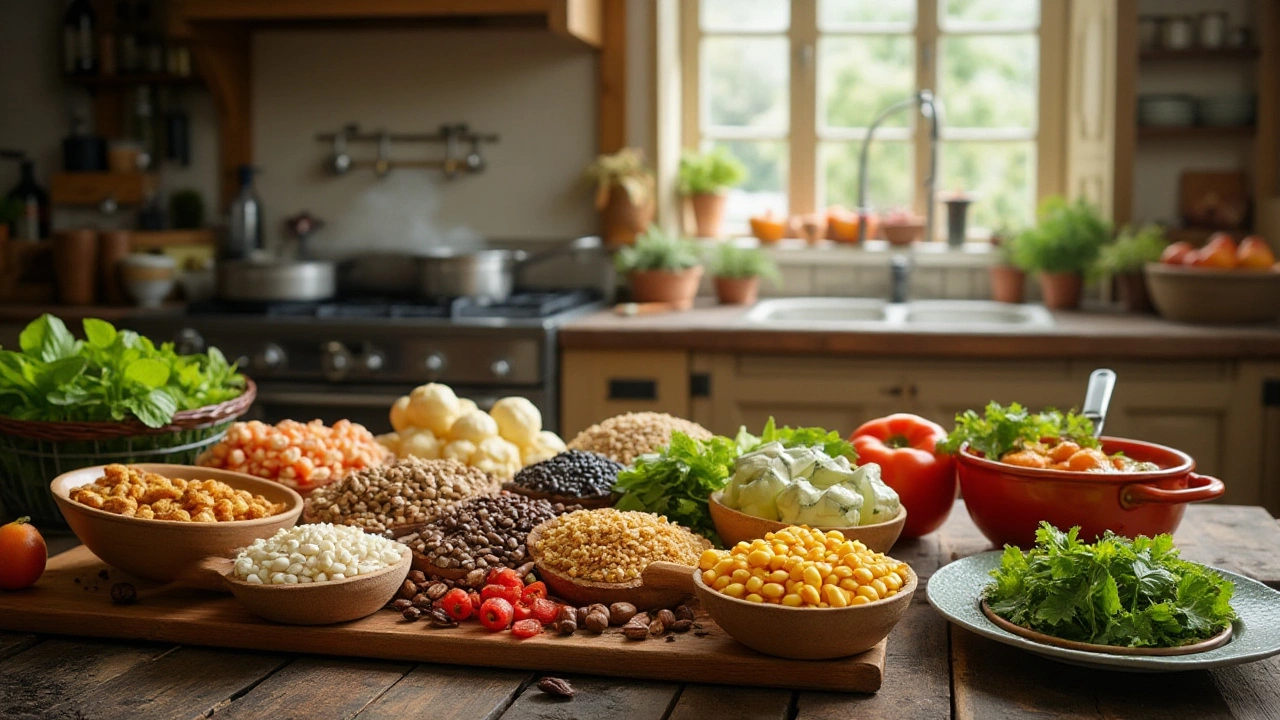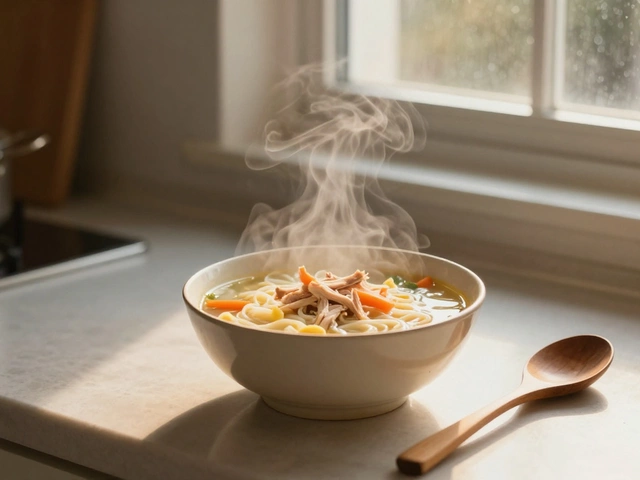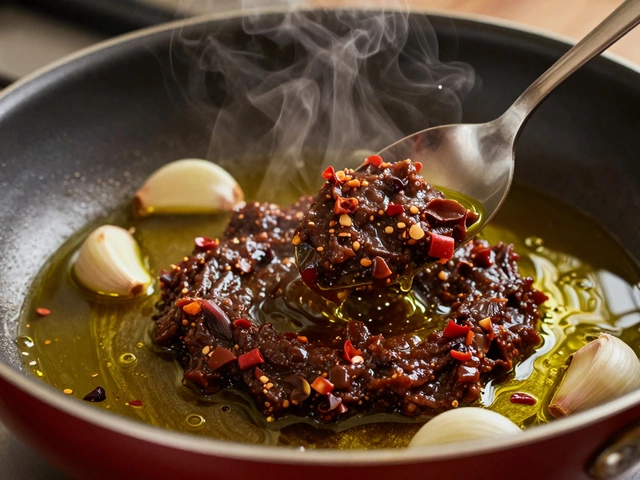If you're a vegetarian—or thinking of becoming one—you might wonder just how easy or difficult it could be to get enough protein from your diet. There's a common belief floating around that without meat on your plate, you'll inevitably struggle with protein intake. Well, let me assure you, this couldn't be further from the truth.
Protein, the building block of life, is abundantly available in a variety of plant-based foods. Cultural cuisines from around the globe have long benefited from lentils, beans, seeds, and nuts, not just for their protein but also for the flavors and textures they lend. And don't overlook the role of grains and soy products, both versatile staples with tons of potential.
In this guide, you'll discover how to make the most of these incredible ingredients and craft meals that are as balanced as they are delicious. Whether you're a seasoned vegetarian or just embarking on your plant-based journey, you'll find insights and inspiration to fuel your everyday. So roll up your sleeves, and get ready to dive into the tasty world of vegetarian protein!
- Understanding Vegetarian Protein Needs
- Top Plant-Based Protein Sources
- Creative Vegetarian Recipes for Protein
- Tips for Balancing Your Diet
Understanding Vegetarian Protein Needs
Diving into the vegetarian lifestyle begins with understanding your body's nutritional needs, particularly when it comes to vegetarian protein. Protein is crucial for maintaining muscle mass, repairing tissues, and producing enzymes and hormones. Most adults require about 46-56 grams of protein per day, depending on factors like age, sex, and physical activity level. For vegetarians, the question isn't just about getting enough protein but also the right kind. Proteins are made up of amino acids, some of which our bodies can't synthesize and must be obtained from our diet.
Completeness in protein sources is vital too. While animal-based proteins offer all essential amino acids, only some plant-based sources do the same. Soy products and quinoa are examples of complete plant proteins. However, don't fret over finding a complete protein in every meal. By consuming a diverse array of plant-based proteins throughout the day, your body can combine these to meet its needs effortlessly. It's interesting to note how some cultures naturally balance protein through complementary foods like rice with beans, which together provide a complete amino acid profile.
For those engaged in a higher level of physical activity, the demand for protein increases. Endurance athletes and those involved in strength training may require up to double the general recommendation. But does this mean reaching for supplements? Not necessarily. Many vegetarians incorporate a variety of protein-dense foods such as lentils, chickpeas, and whole grains into their meals, which easily fulfill these enhanced requirements. A well-thought-out vegetarian diet can be incredibly fulfilling and nutritionally rich.
"Nutritional diversity is key," says Andrea Giancoli, a registered dietitian. "Vegetarians are often more in tune with the need to balance meals with diverse nutrients and can actually experience greater health benefits as a result."With this understanding, vegetarians can thrive. By being mindful of both quantity and variety, it's entirely possible to lead a healthy and energetic life without any meat on the menu.
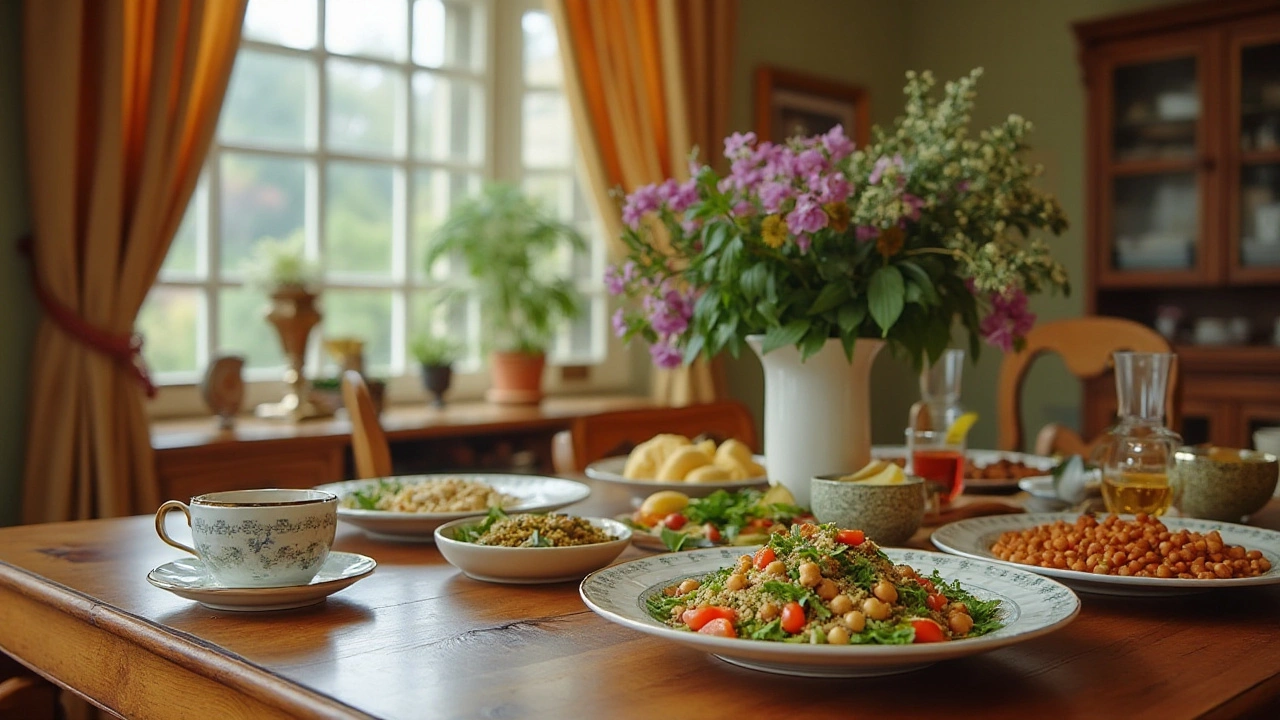
Top Plant-Based Protein Sources
When you start exploring the diverse world of vegetarian protein, you'll quickly realize there's no shortage of options. It's all about knowing where to look and how to make the most of these protein-packed treasures. For many of us, our first thought might be beans and legumes, and rightly so. Lentils, chickpeas, black beans, and kidney beans are just a few examples of legumes that not only provide a rich source of protein but are also excellent for heart health. These versatile ingredients can be added to soups, stews, salads, and even blended into hearty spreads like hummus. Plus, they're relatively inexpensive and easy to store, making them a staple in several global cuisines.
Nuts and seeds are another powerhouse in the vegetarian protein department. Almonds, peanuts, chia seeds, and sunflower seeds not only pack protein but also healthy fats and a load of other essential nutrients. They make wonderful additions to smoothies, yogurts, and even as crunch elements in cereals and baked goods. Just a handful can often provide a substantial protein boost to your meal or snack. However, it’s important to note that they tend to be calorie-dense, so moderation is key.
"The beauty of plant-based proteins is that each source not only contributes its share of the protein but also vitamins, minerals, and fiber, making them a solid choice for a comprehensive diet," remarks Dr. Karen Moon, a leading nutritionist in plant-based diets.
Now let’s talk about grains, which might not immediately come to mind when thinking of protein sources, but they can be surprisingly protein-rich. Quinoa, for instance, is often dubbed a 'superfood' because it contains all nine essential amino acids, making it a complete protein. It's a fantastic base for salads or served as a side dish. Similarly, wild rice and oatmeal are excellent choices, each offering a distinct nutritional profile along with their protein content. They table a unique opportunity to step away from mainstream options and experiment with flavors and textures in the kitchen.
And who can forget soy products? From tofu to tempeh and even edamame, these foods are invaluable for those looking to up their protein intake. Tofu, with its mild flavor and firm texture, can be a stand-in for meat in countless recipes, while the nutty, firm qualities of tempeh add a delightful twist to sandwiches, stir-fries, and more. Soy products are especially beneficial due to their ability to adapt to various cooking methods and absorb flavor like a sponge.
| Food Item | Protein Content (per cup) |
|---|---|
| Lentils | 18g |
| Almonds | 30g |
| Quinoa | 8g |
| Tofu | 20g |

Creative Vegetarian Recipes for Protein
Exploring the world of vegetarian recipes opens up a treasure trove of culinary possibilities that are incredibly satisfying and rich in flavor. When it comes to crafting meals full of protein-rich foods, creativity is your best ally. Start with the humble chickpea, often overlooked for its robust contribution to the kitchen. Savory falafels, a staple in Middle Eastern cuisine, can be a protein-packed addition to your meal plan. Made by blending chickpeas with herbs, garlic, and spices, these little wonders are fantastic in pita pockets or atop colorful salads. A single cup of chickpeas boasts around 15 grams of protein, making them a powerful plant-based ally in meeting your dietary needs.
Let's turn our attention to lentils, another superstar in the plant-based protein family. Whether you're whipping up a hearty lentil soup or a spiced lentil loaf, these little legumes pack a punch. They come in various colors and flavors, each bringing its unique texture to dishes. Try adding red lentils to your curry recipes for a silky, protein-filled delight, or mix green lentils with quinoa and colorful veggies for a refreshing salad. Adding diversity to your plate not only satisfies your nutritional needs but also delights your taste buds in new ways you never imagined possible.
Tofu, derived from wholesome soybeans, serves as a chameleon-like entity that can transform into whatever you desire. Its ability to absorb flavors is unmatched, allowing it to swing from spicy stir-fries to sweet desserts with ease. Imagine a tofu scramble seasoned just right—sometimes indistinguishable from eggs to the untrained palate. Or maybe a marinated tofu steak, grilled to perfection, tantalizing the most discerning eater. A widely appreciated fact is that half a cup of tofu offers about 10 grams of protein, a simple yet effective way to bolster your intake in both innovative and traditional dishes.
For those who crave variety, nuts and seeds are a must-have in your protein arsenal. Almonds, walnuts, and chia seeds, to name a few, can be sprinkled over almost anything or consumed as snacks on their own. Incorporate them into granolas or energy balls to indulge your sweet tooth without compromising on your nutritional goals. Converting conventional recipes into protein-rich versions often involves subtly adapting the ingredients: think of replacing heavy cream in pasta with almond milk, boosting not only flavor but also the nutrient content. A study by the National Institutes of Health even showed that people who added nuts to their diet could increase their life expectancy.
“Creativity doesn’t wait for that perfect moment. It fashions its own perfect moments out of ordinary ones.” - Bruce Garrabrandt
Finally, the role of grains shouldn’t be underestimated. Quinoa, often mistaken for a grain but botanically a seed, stands out among its counterparts. Integrate it into your meals as a substitute for rice or pasta or use it as a base for salads and bowls. Packed with all nine essential amino acids, quinoa becomes a complete protein source, a rarity for plant-based foods. Not to mention, making quinoa is as easy as pie. Simply rinse it, toss it into a pot with twice the amount of water, bring to a boil, and let it simmer for about 15 minutes until it’s fluffy perfection. Consider this a golden opportunity to seamlessly incorporate vegetarian protein into your daily routine while embracing the wealth of flavors available at your fingertips.
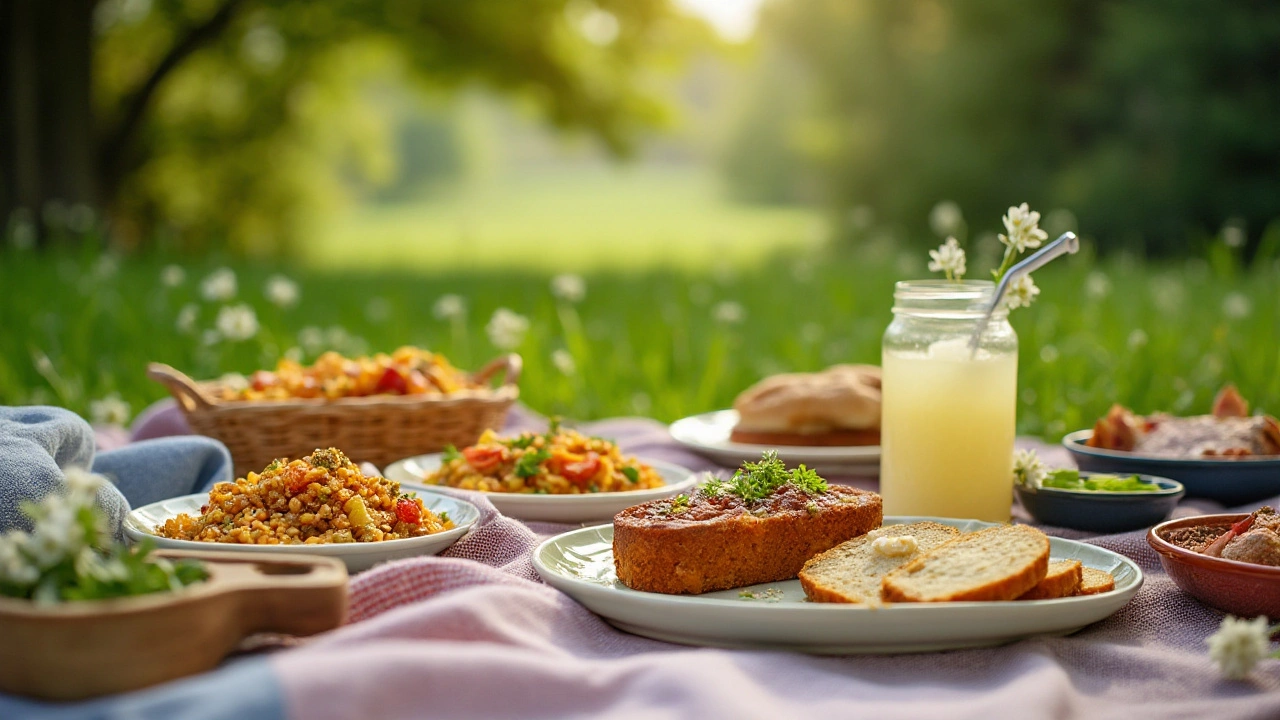
Tips for Balancing Your Diet
Finding the right balance in a vegetarian diet is crucial, especially when it comes to achieving an optimal intake of protein-rich foods. Although it might sound daunting at first, with the right approach and a bit of creativity, maintaining a balanced diet can become second nature. This journey starts by understanding that while vegetables are a large part of the diet, incorporating a variety of other ingredients will enrich the nutritional profile of your meals.
Proteins should be spread throughout the day, rather than being crammed into a single meal. Think of your day as a palette, and each meal as a stroke of paint, contributing to the masterpiece. Breakfast can be an opportunity to include protein-rich grains like quinoa, which pairs well with fruits and a splash of almond or soy milk. Moving onto lunch, a hearty lentil soup or a chickpea salad not only satiates your hunger but packs in the protein needed for energy throughout the afternoon.
Snack time can also be nutritious and protein-packed. Try a handful of nuts or a cup of unsweetened Greek yogurt to keep your energy levels up. For dinner, incorporating soy products such as tofu or tempeh, along with a medley of colorful vegetables, can create a balanced and delicious meal. As you explore these options, keep in mind that experimentation is key; don't be afraid to combine different vegetarian protein sources to meet your dietary needs.
"A well-planned vegetarian diet can meet nutritional needs during all stages of life," - American Dietetic Association
Another essential aspect is the inclusion of sufficient variety in your diet to prevent nutritional monotony and to ensure intake of all essential amino acids. Combining legumes with grains, such as rice and beans, can form a complete protein, providing your body with all the amino acids it needs for building and repairing tissues.
Hydration should not be overlooked either; ensure you're drinking enough water throughout the day. This process assists in metabolizing proteins and absorbing nutrients effectively. While dietary supplements can be a useful addition, particularly B12 and Omega-3 fatty acids, it's always recommended to consult with a healthcare professional to address specific dietary requirements. Lastly, staying aware and conscious of portion sizes will help in managing weight and providing the right amount of nutrients without excessive calorie intake.
